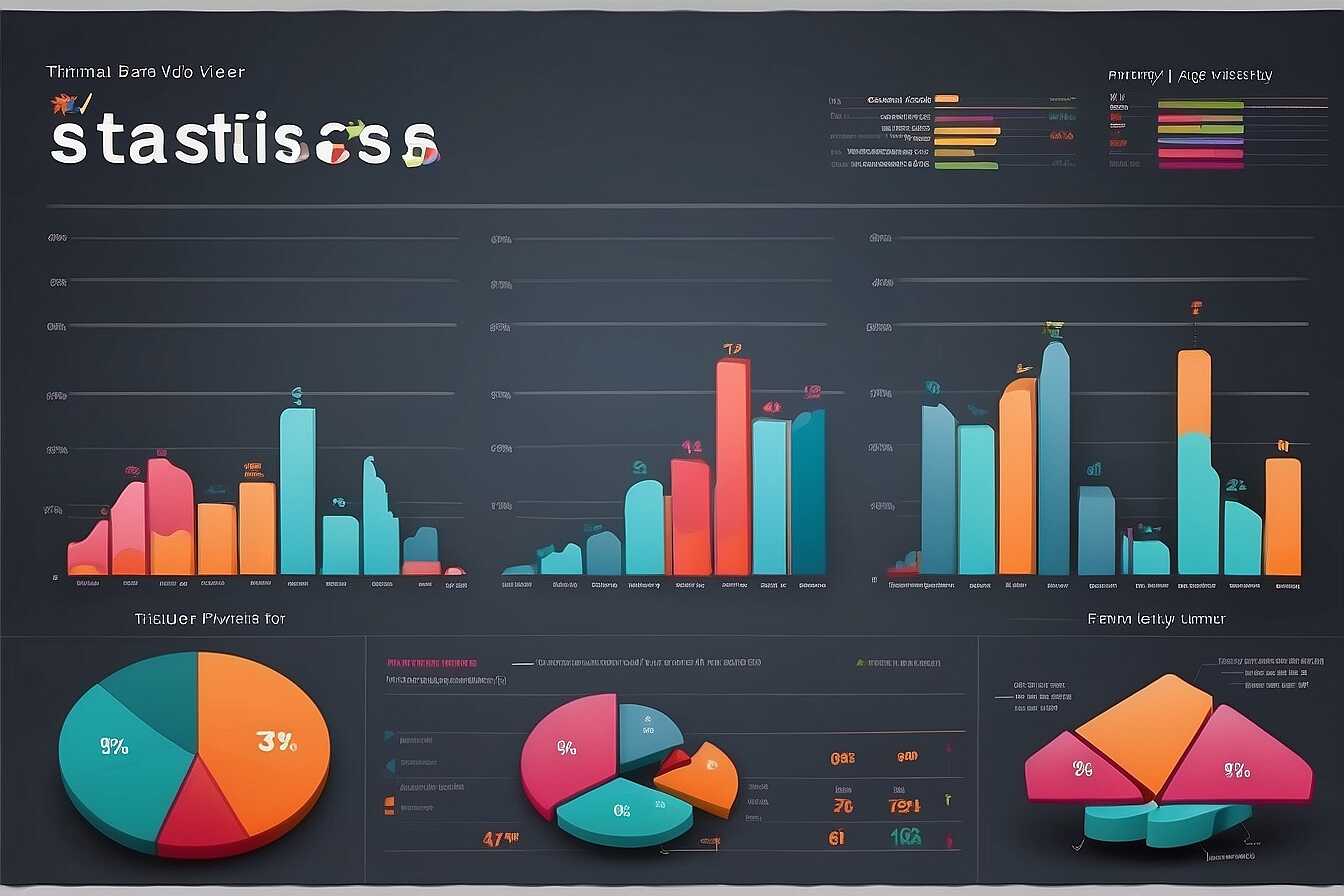Effective content clustering strategies can significantly boost product page rankings on search engines. By organizing related content around a central theme, e-commerce sites can enhance their SEO performance and user experience. At Metrics Rule, we understand that implementing these strategies involves practical techniques and insights tailored to your unique products. This article will guide you through actionable steps to optimize your product pages using proven SEO practices.
Understanding Content Clustering in E-commerce SEO
Content clustering is a strategic approach in e-commerce SEO that involves organizing website content into grouped topics or themes. By creating clusters, e-commerce sites can improve their search engine visibility and enhance user experience. For example, a website selling outdoor gear could create clusters around categories like camping, hiking, and fishing. Each category would have main pages optimized for relevant keywords. These main pages link to related product pages and blog posts, ensuring that search engines identify the site’s relevance to those specific topics. This organized structure helps search engines like Google and Bing crawl and index content efficiently, ultimately boosting product page rankings.
How to Implement Content Clustering in Your E-commerce Strategy
To implement content clustering in your e-commerce strategy effectively, start by conducting comprehensive keyword research. Identify essential keywords related to your products and categorize them into logical groups. Each group will serve as a content cluster that includes a pillar page featuring overarching themes and links to related content. For instance, a pillar page on “Camping Gear” can link to product pages for tents, backpacks, and cooking equipment. Additionally, creating well-structured sitemaps and improved internal linking helps search engines understand the relationship between different content pieces. This organization enhances user navigation, leading to better engagement and potentially higher conversion rates.
Benefits of Optimizing Product Pages through Clustering
Optimizing product pages using content clustering strategies brings numerous benefits. These strategies improve rankings by ensuring that search engines better understand the context of products. By grouping related content, you can create a more comprehensive narrative around your products. This approach enhances user experience, which can boost conversions significantly. According to various studies, properly implemented clustering strategies can improve page rankings by 30% or more. Furthermore, keywords connected to the main product categories can attract targeted traffic, increasing both visibility and sales. Content clustering helps establish authority and reliability in the e-commerce space.
How Content Clustering Enhances E-commerce SEO
Content clustering enhances e-commerce SEO by organizing related product information in a structured manner. By optimizing product pages with relevant keywords and supporting content, you create a robust network of information that Google can easily crawl and index. This optimization process significantly improves the web pages’ ranking in search engine results, ensuring that potential customers find your products easily. Through the use of internal links and related content, you keep users engaged longer, thus increasing the likelihood of conversions. Ultimately, effective content clustering delivers a clear message around your products, making it easier for search engines and users to recognize the relevance and quality of your offerings.

Essential Components of a Strong Content Cluster
Effective content clustering strategies center around three key elements. First, topic relevance ensures that the content remains focused on related themes, assisting search engines in understanding the site’s purpose. Second, strategic keyword placement is essential; choose a primary keyword for the main topic and relevant secondary keywords for subtopics. Third, an internal linking structure connects related content, improving navigation and boosting the SEO value of each page. By implementing these elements, you enhance your e-commerce site’s visibility in search engines like Google and Bing.
Understanding Internal Linking Structures for Improved SEO
An effective internal linking structure is crucial for guiding visitors and search engines through your e-commerce site. It should connect pages with related keywords seamlessly, enabling users to find content easily. For example, link product pages to relevant blog posts or category pages. This approach not only improves user experience but also allows Google to crawl your site efficiently. By ensuring that your internal links point to valuable content, you enhance your site’s overall SEO performance and reliability, making it easier for your audience to discover quality information.
Key Numerical Insights on Page Optimization Techniques
- 70% of customers rely on search engines to find products.
- 40% of shoppers say they prefer websites with organized content.
- 55% of web traffic comes from mobile devices.
- Content clustering can improve rankings by up to 30%.
- High-quality backlinks can boost page authority by 50%.
- Over 60% of users are influenced by site speed and structure.
- Product pages with clear content maps see up to 20% higher conversions.

Step-by-Step Guide to Implementing Content Clusters
To effectively set up content clusters on an e-commerce website, start by identifying your core product categories. Next, conduct keyword research to find relevant terms that align with customer searches. Develop high-quality, supporting content for these keywords, ensuring it directly links to your product pages. This strategy enhances user experience and improves SEO. Aim for clusters with at least 3 to 5 related content pieces to cover a topic thoroughly, increasing reliability in search engine rankings.
Essential Techniques for Aligning Product Pages with Supporting Content
Aligning product pages with supporting content involves creating a strategic framework for your e-commerce site. First, establish a clear content hierarchy that connects primary product offerings to related articles, guides, or blog posts. Use internal links to create pathways from supporting content to product pages. This enhances user navigation, improves crawling efficiency, and increases the chances of higher rankings on search engines like Google and Bing. By employing proven techniques and effective content mapping, you can significantly boost your e-commerce site’s visibility and performance.

Analyzing and Enhancing Your Content Clusters with Tools
To analyze content clusters effectively, several tools can aid your efforts, regardless of whether you’re looking for free or premium options. Tools like SEMrush, Ahrefs, and Moz are highly regarded for their abilities in keyword research and competitive analysis. These content analysis tools provide essential metrics that can enhance your e-commerce SEO strategies. Meanwhile, tools such as Google Analytics help you track performance over time. The average cost of premium content analysis tools typically ranges from $100 to $500 per month, depending on the features and data sets provided.
Essential Features of Performance Enhancement Tools
When evaluating performance enhancement tools, consider features like keyword clustering software and SEO reporting tools. These tools deliver comprehensive insights into how your content clusters are performing within search engines, particularly Google and Bing. By using tools that excel in crawling and indexing data, you can easily identify gaps in your content strategy. This can improve your rankings and conversions in a competitive e-commerce landscape. Metrics Rule, based in Vancouver, provides services that leverage these capabilities for maximizing SEO potential.
Advantages of Organized Content Grouping for Online Stores
- Enhanced user experience leads to longer page visits.
- Better visibility in search results helps attract organic traffic.
- Structured content boosts relevance for search queries.
- Content clustering encourages related product discovery.
- More efficient content updates save time and resources.
- Improved SEO performance increases website credibility.
- Higher conversion rates result from streamlined shopping journeys.

Tracking the Impact of Content Clustering on SEO
To track the effectiveness of content clustering strategies, marketers should utilize various analytics tools. Google Analytics is essential for measuring organic traffic increase to product pages. They should also monitor user engagement metrics like bounce rate and average session duration, as these can indicate the quality of content. Key performance indicators (KPIs) should include the number of keywords ranking on the first page, changes in conversion rates, and improvements in click-through rates (CTR). This data provides insights into how well the clustering strategy enhances product page rankings. When marketers notice a percentage increase of 20% or more in organic traffic, it usually signals a successful impact from these strategies.
Essential KPIs for Measuring SEO Success from Content Clustering
When evaluating the impact of content clustering on SEO, it’s crucial to focus on KPIs like organic traffic analysis and keyword performance. Tracking content clustering strategies can reveal insights into customer behavior and preferences, enabling marketers to refine their approach. Metrics such as the number of keywords ranking in top positions and conversion rates are essential. By analyzing data trends, marketers can ensure that their product pages are optimized effectively, leading to improved rankings. The right SEO performance indicators help to validate the effectiveness of these strategies while driving better visibility in search engines like Google and Bing.
Common Mistakes to Avoid in Content Clustering
Many businesses overlook essential factors when implementing content clustering strategies. Common mistakes include failing to identify the right primary keywords, neglecting to update clustered content regularly, and not analyzing the performance of each keyword subset. E-commerce businesses can improve results by ensuring that their content clusters directly align with their SEO objectives. Regular analysis enhances keyword targeting and maximizes overall SEO performance. Studies have shown that over 70% of e-commerce sites fail to adopt effective content clustering techniques, leading to missed opportunities for increased organic traffic and conversions.
Best Practices for Effective Content Structure
To create a robust content structure, e-commerce companies should start by conducting thorough keyword research. This research will help them identify high-value keywords that align with user intent and market demand. Once the keywords are established, businesses should design their content clusters strategically around these keywords. This effective keyword usage will enhance search engine visibility and improve crawling and indexing efficiency. Regularly updating clusters ensures relevancy in search results. Following these best practices provides a solid foundation for sustainable organic growth and drives long-term success for e-commerce ventures.
Comparative Examples of E-commerce Brands Utilizing Structure
- Brand A offers a wide range of products with focused categories, making navigation easy for users.
- Brand B clusters similar products but lacks clear distinctions, confusing their customers.
- Brand C uses effective content pyramids to enhance search engine ranking.
- Brand D has disorganized product pages leading to a higher bounce rate.
- Brand E utilizes structured data effectively, improving SERP visibility.
- Demographics interested in organized content include online shoppers seeking ease of access to information.
- Tech-savvy consumers prefer websites with fast loading and well-organized product offerings.
Emerging Trends in E-commerce Content Strategies
In examining emerging trends, e-commerce professionals should focus on the latest innovations in content clustering strategies. These include the use of AI advancements to enhance the efficiency of keyword research and analysis, enabling better-targeted content strategies. Many online retailers are investing heavily in these methods, with a significant percentage expected to adopt content clustering techniques by 2025. This shift is designed to improve search engine rankings, ensuring that product pages are highly relevant and visible to consumers in a competitive landscape.
Impact of AI on Content Clustering and E-commerce Strategies
The impact of AI on content clustering and e-commerce strategies is profound. AI technologies streamline processes, helping marketers quickly analyze vast amounts of data. This leads to more precise and relevant content creation. E-commerce platforms utilizing AI can enhance their keyword targeting and overall SEO efficiency, improving their chances of ranking higher on search engines like Google. As a result, businesses can navigate the complexities of digital marketing with greater reliability, ensuring sustained performance and engagement with their target audience.
